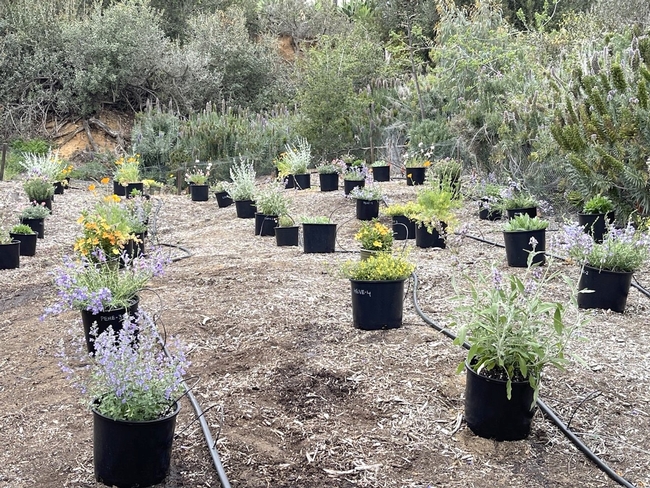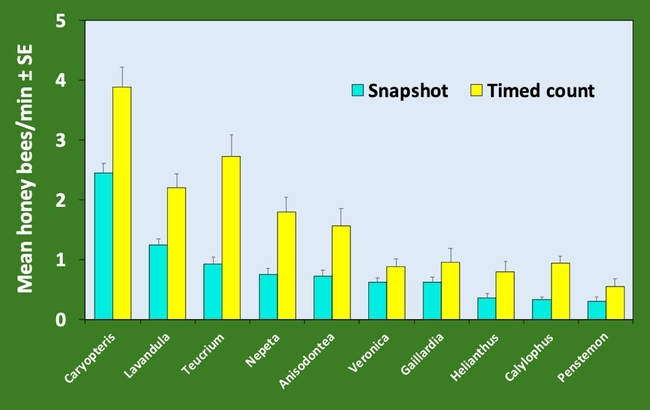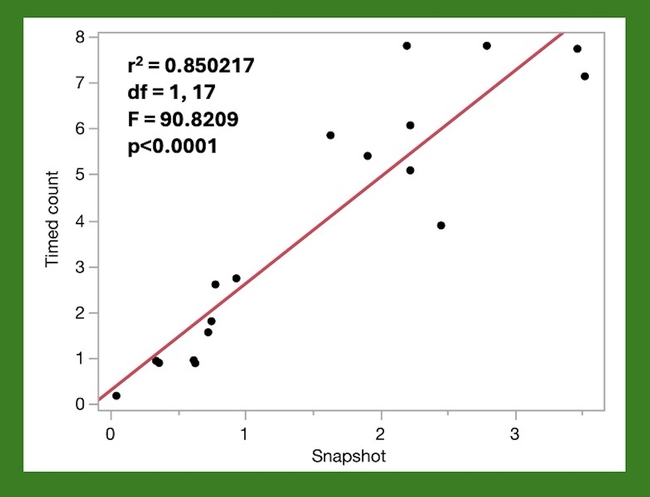I've written previously about the Haven's research on bees and gardens. This work included a look at bee preferences for common California landscape plants and work to help growers and landscapers provide the healthiest plants for bees.
Studies on bee plant preferences were described in this blog post, and the first year's results (2022) of our current project developing bee sampling methods for growers and landscapers was described in this post.
The current project is an evaluation of a common insect sampling method, timed counts, with a novel method called snapshot counts. As the name suggests, the snapshot methods uses several quick counts rather than one longer timed count to assess the number of bees choosing a plant. Our goal was to see if the faster snapshot method could provide bee counts with accuracy similar to the widely used timed count method.
The speed of the snapshot method could allow it to be included with other routine insect sampling done by growers and landscapers. This would provide a way to assess the relative attractiveness of a nursery or landscape plant mix to bees, allowing for both accurate plant recommendations and targeting of bee-compatible pest management.
Trials took place at locations in San Diego County, the center of California's nursery industry.

While the average number of bees observed per plant differs between the two methods, the pattern of preference is the same for both (Fig. 2). This is confirmed by regression analysis (Fig. 3), which found a strong correlation between the two methods
Our goal was not to determine the absolute number of bees expected on a plant, as that will vary with location, season, and weather. Rather, we wanted to understand which plants are more likely to be chosen within a plant mix. Growers can then compare new plant varieties to those with known attractiveness to determine how they'll fit into a bee garden.

